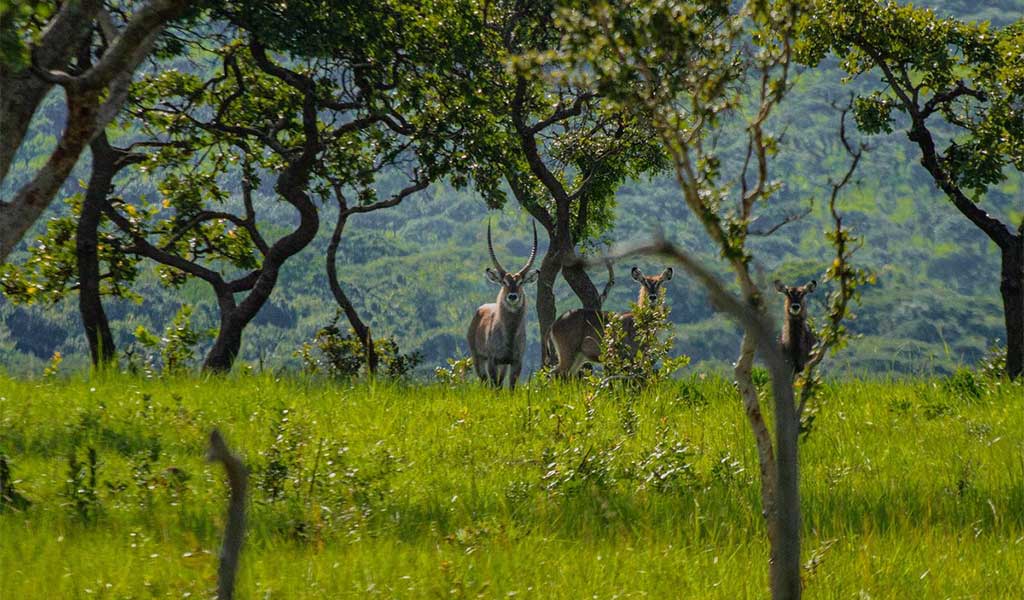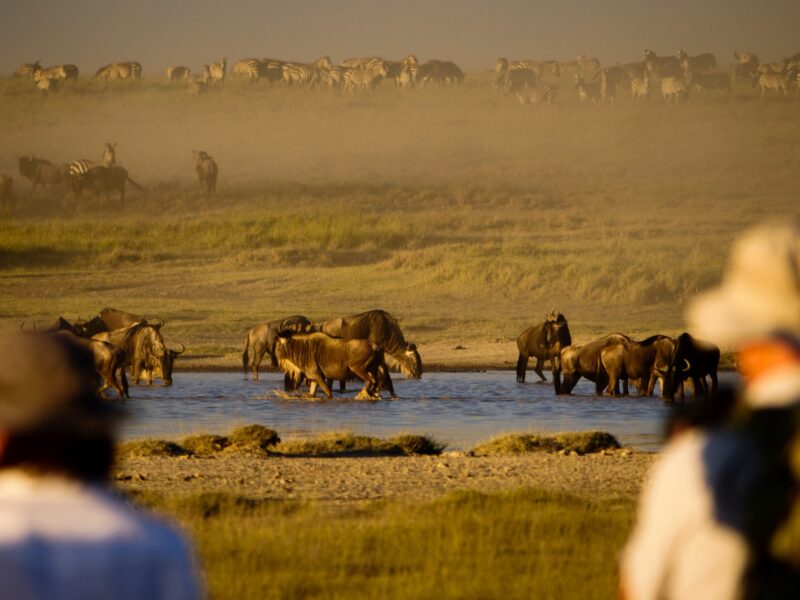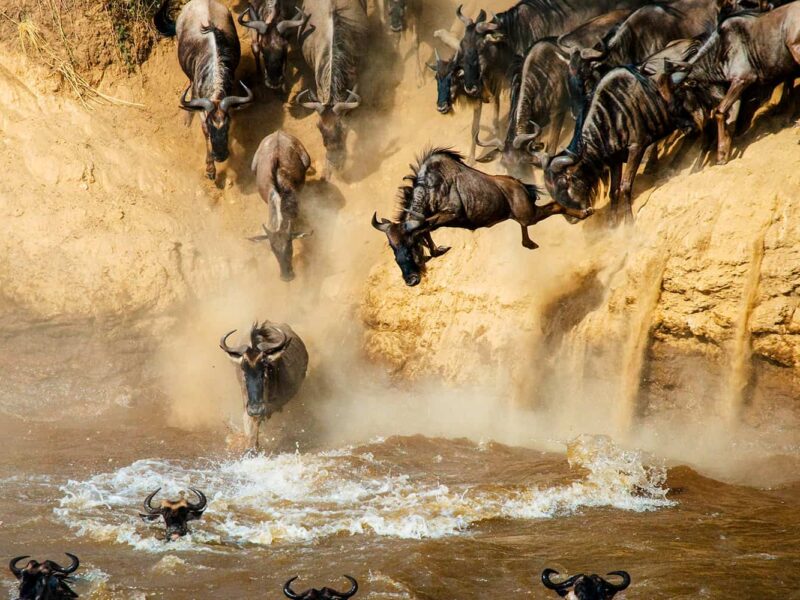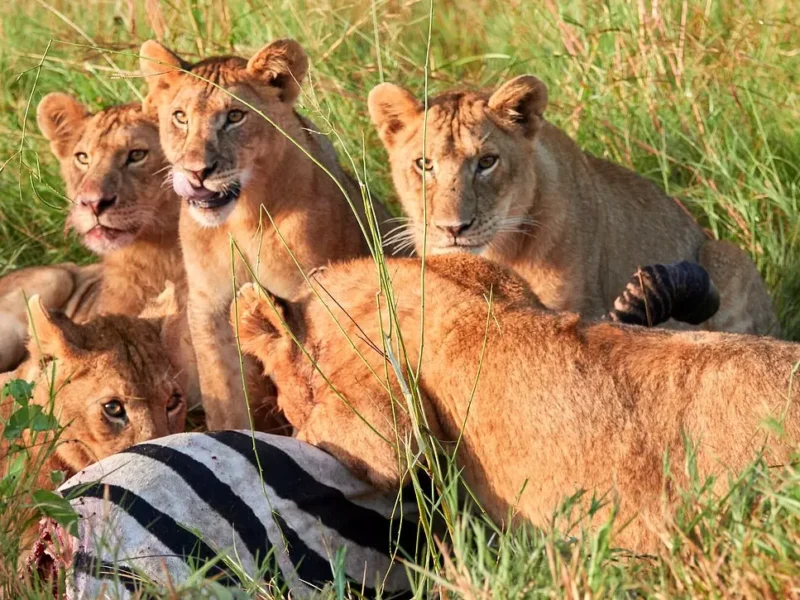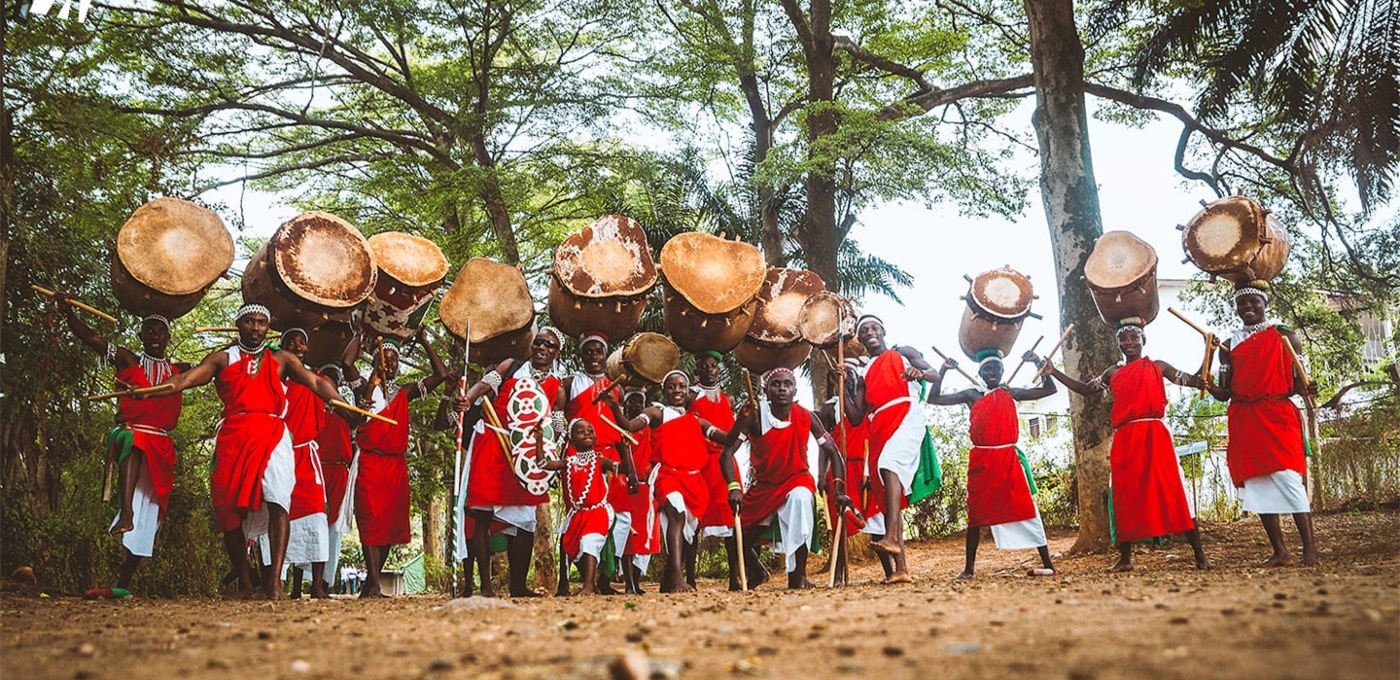
Cultural Gems of Burundi: Traditions, Art, and History
April 24, 2025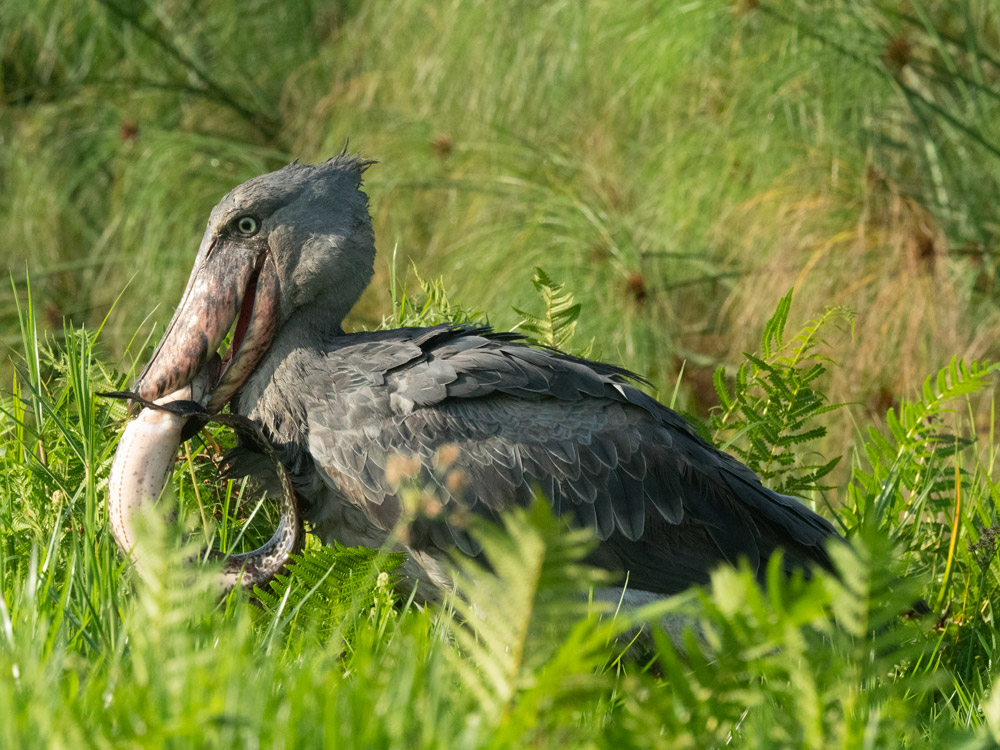
Mabamba Swamp: A Birdwatcher’s Paradise and Wetland Heaven
April 24, 2025Explore the Wild Heart of Burundi: Ruvubu National Park
Ruvubu National Park, established in 1980, is Burundi’s largest protected area, spanning 508 km² across the provinces of Muyinga, Karuzi, Cankuzo, and Ruyigi. The park is named after the Ruvubu River, which meanders through its length, shaping its diverse ecosystems. It encompasses savannahs, woodlands, grasslands, and floodplain areas, serving as a critical sanctuary for both wildlife and local communities.
Biodiversity Highlights
Ruvubu National Park boasts over 50 mammal species, including
Hippopotamuses (Hippopotamus amphibius)
The Ruvubu River, meandering through the park, provides an ideal habitat for hippopotamuses. These semi-mammalian giants spend much of their time submerged in water to keep cool and protect their sensitive skin from the sun. Hippos are primarily nocturnal, grazing on grasses during the night. Their presence is a testament to the park’s healthy aquatic ecosystems
Nile Crocodiles (Crocodylus niloticus)
Nile crocodiles inhabit the waterways of Ruvubu National Park, including the Ruvubu River and its tributaries. As apex predators, they play a crucial role in maintaining the balance of the ecosystem by controlling populations of fish and other aquatic animal. Visitors may encounter them basking on riverbanks or lurking in the water.
African Buffalo (Syncerus caffer)
African buffaloes are among the most formidable herbivores in the park. They are known for their strong social structures and protective behavior. The park’s varied terrain offers ample grazing opportunities, supporting both resident and migratory buffalo populations. Their herds contribute to the dynamic interactions within the park’s savannah and woodland ecosystems.
Waterbucks (Kobus ellipsiprymnus)
Waterbucks are large antelopes commonly found near the park’s water source. They are characterized by their shaggy coats and distinctive white ring on the them. These herbivores are predominantly grazers, feeding on grasses and reed. Their presence indicates the health of the park’s grassland and wetland habitats.
Ruvubu National Park’s rich biodiversity, including these large mammals, underscores its importance as a conservation are. Efforts to protect and preserve these species are vital for maintaining the ecological balance of the region.
Primates of Ruvubu National Park
Ruvubu National Park hosts five primate species, each contributing to the park’s rich ecological tapestry
Olive Baboon (Papio anubis), Olive baboons are highly adaptable and social primates, forming large troops that forage across the park’s varied habitats. They are omnivorous, feeding on fruits, seeds, and small animals. Their presence indicates a healthy savannah ecosystem
Vervet Monkey (Chlorocebus pygerythrus) Vervet monkeys are small, agile primates with distinctive black faces and white fringes. They inhabit savanna and woodland areas, living in social groups. Their diet includes fruits, seeds, and insects. Vervets are known for their complex social structures and communication. Red colobus monkeys are specialized leaf-eaters, primarily consuming young leaves, flowers, and unripe fruits. They possess unique digestive adaptations, such as a multi-chambered stomach, to process their fibrous diet. These monkeys are typically found in dense forested areas
4.Blue Monkey (Cercopithecus mitis), Blue monkeys are medium-sized primates with a predominantly grey or olive coat and a distinctive black face. They are primarily frugivorous, feeding on fruits, leaves, and insects. Blue monkeys are arboreal and live in forested habitats, often in the park’s montane regions
5.Senegal Bushbaby (Galago senegalensis Senegal), bushbabies are nocturnal primates known for their large eyes and long tails. They are insectivorous and arboreal, using their strong hind limbs to leap between trees. Their presence in the park highlights the area’s ecological diversity.
Birdlife of Ruvubu National Park
The park is a haven for bird enthusiasts, with over 200 bird species recorded, including several notable and rare species:
Papyrus Gonolek (Laniarius mufumbiri)
This striking bird is found in papyrus swamps and is known for its vivid red and black plumage. It feeds on insects and is often heard before seen, with a distinctive “U-tzeu-U-tzee” cal. The papyrus gonolek is considered near-threatened due to its specialized habitat requirement.
White-winged Warbler (Bradypterus carpalis)
A rare and elusive species, the white-winged warbler inhabits dense reedbeds and is difficult to observe. Its presence in the park underscores the importance of wetland conservation.
Pelicans and Ibises
Various species of pelicans and ibises are found in the park’s aquatic habitat. These waterbirds are crucial for maintaining the ecological balance of the park’s wetland.
Other Notable Species
The park also supports populations of ring-necked francolins, red-faced barbets, cinnamon-breasted tits, and papyrus canaries, among other. These species contribute to the park’s designation as an Important Bird Area (IBA.
Ruvubu National Park’s rich primate and bird populations make it a significant site for biodiversity conservation in East Africa. Efforts to protect these species are vital for maintaining the ecological integrity of the park.
The park also supports various reptiles and amphibians, contributing to its ecological significance
Conservation Challenges
Despite its ecological importance, Ruvubu National Park faces several conservation challenges:
Poaching
Illegal hunting remains a major threat to the park’s wildlife, Park rangers are often outnumbered and under-equipped, relying on outdated tools like machetes and spears. This lack of resources makes them vulnerable to attacks from poachers, who are emboldened by the absence of adequate deterrents. The park’s deputy head, Roger Niyonkuru, has highlighted the necessity for paramilitary training and modern equipment, including firearms, to effectively combat poaching and protect the park’s biodiversity
Encroachment
Fertile lands within the park attract local farmers, leading to agricultural encroachment and habitat degradation. Despite the 2016 Forestry Code mandating a buffer zone of at least one kilometer between park boundaries and private fields, many farmers cultivate right up to or even inside the par. This encroachment is driven by land scarcity and declining soil fertility in surrounding area. Additionally, bushfires set by farmers to clear land for agriculture often spread uncontrollably, further damaging the park’s ecosystem.
Resource Extraction
Communities surrounding the park rely on its resources for survival, leading to illegal activities such as logging and charcoal production. These activities not only deplete the park’s natural resources but also contribute to environmental degradation. The extraction of firewood and other resources places additional stress on the park’s ecosystems, making conservation efforts more challenging.
Infrastructure Deficits
Limited surveillance and visitor facilities hinder effective management and tourism development. The park’s vast area requires more staff and better equipment to monitor and protect its resources. Insufficient infrastructure also affects tourism, which could be a significant source of revenue for conservation activities. Efforts are underway, including a World Bank project aimed at improving infrastructure and providing employment opportunities for local communities, such as the Batwa families, to help clear access tracks.
Addressing these challenges requires coordinated efforts between government authorities, conservation organizations, and local communities to ensure the long-term protection and sustainability of Ruvubu National Park.
Visitor Experience
While relatively remote, Ruvubu National Park offers a range of activities for nature enthusiasts:
Game Drives
The park features approximately 50 km of tracks suitable for guided game drives. These excursions allow visitors to traverse the park’s varied landscapes, offering opportunities to spot wildlife such as buffaloes, antelopes, and various bird species. Night drives are also available, providing a chance to observe nocturnal animals like lions and leopards in their natural habitats
Walking Safaris
For a more intimate experience, walking safaris enable visitors to explore the savannah and woodlands on foot. Accompanied by knowledgeable guides, these excursions offer insights into the park’s flora and fauna, including encounters with buffaloes and other wildlife.
Bird Watching
Ruvubu National Park is a haven for bird enthusiasts, with over 200 species recorded, including the papyrus gonolek, white-winged warbler, and various pelicans and ibiss. The park’s diverse habitats, particularly along the Ruvubu River, provide excellent opportunities for bird watching.
Boat Safaris
Boat safaris along the Ruvubu River offer a unique perspective of the park’s aquatic life. Visitors can observe hippos and crocodiles in their natural environment, as well as a variety of bird species. These tranquil excursions provide a relaxing way to experience the park’s waterways.
Nature Wakls
Guided nature walks allow visitors to delve deeper into the park’s ecosystem. These walks provide opportunities to learn about the park’s diverse plant species and the intricate relationships within its habitats. They also offer chances to spot wildlife that might be missed during other activities.
For optimal experiences, it’s recommended to visit during the dry seasons, from June to August and December to February, when wildlife viewing is more favorable. While accommodations within the park are limited, nearby towns offer lodging options. Advance booking is advisable due to the park’s remote location.
Whether you’re interested in observing wildlife, bird watching, or exploring the park’s diverse ecosystems, Ruvubu National Park provides a range of activities to suit various interests.
The best time to visit is during the dry season (June to September), offering cooler temperatures and better wildlife visibility.
Accommodation & Access
Accommodation options within the park are limited, with basic camping facilities available. More comfortable lodging is located approximately 100 km away. The park is accessible by road from Bujumbura (approximately 216 km), with potential charter flights for easier access.
Ruvubu National Park stands as a testament to Burundi’s rich natural heritage, offering unique wildlife experiences amidst ongoing conservation efforts. While challenges persist, the park’s ecological significance and potential for sustainable tourism make it a noteworthy destination for those seeking to explore Burundi’s wilderness.

